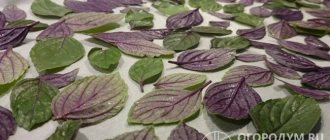Time and months for drying for winter
When ready to pick, the berries should be bright orange or red, firm and healthy. Slightly unripe fruits contain more vitamin C, and those hanging longer on the branches contain more sugars.
When to harvest the plant depends on the region. The period usually lasts from the end of August until frost.
The weather during collection should be clear and dry.
Timing for harvesting rose hips by region for drying
Harvesting can continue until frost. Rose hips that have managed to freeze are less useful. In addition, such fruits spoil faster.
In outskirts of Moscow
Residents of the Moscow region can be guided by the appearance of the fruit. They must be quite ripe. In terms of timing, it is better to start from the end of August. Fruit harvesting can continue until the second ten days of November.
In St. Petersburg
The optimal timing in St. Petersburg is the second half of September. The collection can be completed in October. It is during this period that Indian summer begins, which lasts from 1 to 2 weeks. This is the time when the berries become perfectly dry and ripen. In St. Petersburg and the Leningrad region, as in any other region of Russia, it is necessary to look at the weather forecast before the planned collection.
In the Urals
Harvesting in this region is carried out before frost. And it’s even better if you manage to collect rose hips before September. The exact date is determined by climate. If the weather promises to be cold in the autumn months, it is better to start harvesting in August.
In Siberia
In Siberia they start harvesting berries in the third ten days of September. Collection is also carried out in October. The main thing is not to delay, because fruits exposed to frost will not be able to dry properly. The first frosts in this region may occur as early as November.
In central Russia
Here the collection time coincides with the same period in the Moscow region. In the central zone, harvesting is carried out until the end of October.
Instructions
- Rose hips are collected in dry, clear weather. The best time of day to collect is morning.
- You can pick berries by hand or use auxiliary tools for this: garden shears, a plastic bottle, a rake with a built-in bucket or a hoe.
- You should dress for collection in such a way that there are no exposed areas of your body. Clothing should be made of thick fabric, and hands should be protected with gloves.
- When hand-picked, the fruits are carefully picked along with the sepals and placed in a container.
- When using garden shears, they cut the berries into a substituted bucket, trying to preserve the stalk and not cut off the branches along with the fruit.
- At home they are sorted through, removing rotten and damaged ones, and laid to dry.
How to dry rose hips correctly
Proper drying ensures the preservation of more vitamins and nutrients. Before it starts, the berries are washed, all specimens with signs of significant damage are thrown away and the stalk is cut off. You should not delay the processing of rose hips, because they quickly deteriorate. It is better to do this on the same day when it is collected, maximum the next, but not later.
It is convenient to dry rose hips in the oven:
- The berries are placed on a baking sheet lined with parchment.
- Dry the fruits with the door open at +50°C.
- Drying time – 18 hours. Sometimes you can turn off the oven for a couple of hours. Then it is turned on again. The fruits must reach optimal condition, otherwise they will spoil.
Attention!
Overdried rose hips are not beneficial, and they are tasteless.
There are electric dryers that are more convenient to use:
- The rose hips are loaded into the device and laid out in a thin layer.
- Set the temperature to +50°C and turn on the dryer.
- Drying time is 12 hours.
Attention!
Natural drying is also acceptable, but open sunny areas are not suitable for this. Under the influence of the sun's rays, vitamins are destroyed. It is better to leave the berries in a hot but dark place. The surface must be level. Unlike ovens and electric dryers, natural drying takes much longer, lasting up to several days.
DIY harvester quickly
To make harvesting easier, you can make a harvester yourself.
- A piece of the required length is cut from a plastic sewer pipe with a diameter of 16 cm.
- Three deep slits of the required width are made at one edge.
- The blade from a construction knife is inserted horizontally into the lower part of the slots and tightly fixed with electrical tape. It will cut off the fruit.
- A plug is placed on the other end of the pipe.
Watch the video on how to make the device yourself:
Methods for storing dried rose hips
Store the finished product in closed containers: tin or glass jars. In this case, it is recommended to place the containers in a closet or pantry to protect them from sunlight.
You should not make jars airtight: if they are sealed, mold may begin to form.
Instead of lids, it is better to cover the container with a piece of cloth or several layers of gauze. It is not recommended to cover jars with plastic. Ideal storage conditions are dark, dry and ventilated places.
You can use small fabric bags or cardboard boxes for storage . You need to make sure that they are free of debris and moisture. They should not be saturated with odorous substances.
During long-term storage, it is recommended to periodically check dried fruits for the presence of mold. If all these conditions are met, rosehip retains its medicinal properties for up to 3 years.
The effect of dried rose hips on the body. Beneficial features
Dried rose hips contain a lot of vitamins: A, E, K, P, group B. It also contains high concentrations of ascorbic acid, which is a natural antioxidant.
Rosehip has the following positive properties on the functioning of the body:
- Improved metabolism. When taking a decoction or berries, the functioning of the gastrointestinal tract improves.
- Strengthening the cardiovascular system. Rosehip normalizes blood pressure, cleanses blood vessels of cholesterol and prevents the formation of blood clots.
- Strengthening the immune system. Rose hips contain vitamin C, which helps strengthen the immune system and has an antiviral effect.
- Replenishment of vitamin deficiencies. It is recommended to drink the decoction in winter and autumn: at this time a person experiences a deficiency of nutrients. This ensures improved overall well-being.
- Liver restoration. Rosehip infusions restore liver cells and neutralize bile stagnation.
- Synthesis of red blood cells. Berries help renew blood and saturate it with vitamins.
- Anti-inflammatory effect. Rosehip is used in the treatment of colds and inflammatory diseases.
Be sure to read:
How to choose and store dried fruits, wash, freeze, fight mold and insects
Where to collect rose hips
Some gardeners specifically grow rose hips on their plots. So they are confident in the conditions of crop growth and the quality of raw materials. In most cases, fruits and petals are collected on plant bushes under natural growing conditions. It is important to determine the collection sites to ensure that the raw materials are environmentally friendly.
The rosehip bush, like any other plant, absorbs toxins from the environment during growth. Therefore, to collect raw materials, choose areas far from industrial enterprises and highways. It is best to go deep into the forest and find berries there.
The fruits of rose hips, which grow on forest edges, clearings and slopes, ripen to the maximum. In such conditions, nature provides the bush with enough space, moisture and light for full development.
Dried rose hips: brew in a thermos
For brewing, you should select high-quality berries of a red-brown or orange hue. Do not use overdried or wet fruits.
To prepare the decoction in a thermos use:
- 2 tablespoons dried rose hips,
- 2 tablespoons sugar,
- 500 ml boiling water.
Before brewing, the fruits are washed and crushed. The chopped parts are placed in a thermos and sugar is added. You should not pour boiling water into the thermos; it is better to cool the liquid to +80…+90 degrees.
Water is poured into the container and allowed to brew for 1 hour.
It is recommended to brew the same berries no more than once. Most of the beneficial substances are released during the first brew.
How long to store dried rosehip infusion
Sometimes the volume of finished infusion is too large. In this case, the remainder is stored in the refrigerator for no more than 1-1.5 days.
After this period, mold will form in the liquid and harmful microorganisms will develop. It is better to pour out the spoiled infusion.
You can store the finished broth in the fresh air for no more than 12 hours, as the rate of spoilage outside the refrigerator increases. In addition, harmful substances from the environment can get into the infusion.
It is recommended to drink the decoction immediately after brewing.
Indications for use
Tinctures and decoctions of rose hips are recommended for people suffering from:
- colds,
- sinusitis,
- nervous disorders,
- indigestion,
- liver dysfunction.
Rosehip decoction improves metabolism and helps with weight loss. People with immunodeficiency will also benefit from drinking it: the drink contains a large amount of vitamins.
Contraindications
The use of rose hips is contraindicated for people:
- with gastritis,
- during lactation,
- suffering from thrombophlebitis,
- with high blood pressure.
It is not recommended to use rose hips for dental disease: ascorbic acid can contribute to the destruction of enamel.
If you drink the decoction for a long time, there is a risk of headaches and digestive disorders.
It is not recommended to give the decoction to children under 10 years of age without consulting a pediatrician.
Recipes with fresh rose hips
Rosehip compote
Wash the mature rose hips, cut them, remove seeds and hairs, rinse in cold water, dip in hot sugar syrup (0.5 kg of sugar per 1 liter of water) and leave in it for 8-11 hours. Then separate the fruits from the syrup and transfer to glass jars. Heat the syrup to a boil, boil for 2-3 minutes and pour the fruits into the jars. Then pasteurize in boiling water: half-liter jars - 10-15 minutes, liter jars - 15-20 minutes, then roll up the jars, turn them over onto the lid and leave until they cool.
Rosehip compote with sea buckthorn
A very pleasant and unusual compote can be prepared from large rose hips with sea buckthorn. Cut thoroughly washed rose hips in half, remove seeds and “hairs” (it’s more convenient to use a coffee spoon) and fill half-liter jars with them, alternating layers with sea buckthorn (in the ratio of 3 parts rose hips: 1 part sea buckthorn). Pour boiling sugar syrup (500 g of sugar per 1 liter of water), roll it up, turn it upside down, place it on the floor on a newspaper and wrap it in a warm blanket (or a jacket) overnight.
Rosehip and apple juice
Cut peeled rose hips (3-4 tablespoons) and apples (4-5 pieces) into small pieces, add cold water (1 liter) and boil for several minutes. Then strain, add sugar or honey (3-4 tablespoons), a little lemon or orange zest, lemon juice or citric acid (to taste) to the broth.
Punch with rose hips and red wine
Pour rose hips (50 g) with water (700 ml) and leave for several hours, then heat and boil for 3-5 minutes, then strain. Add 80-100 g of sugar and 0.5 liters of dry red wine to the filtrate, heat again, but not to a boil, and finally add the juice of 1 or 2 oranges. Serve hot.
Drink made from fresh rose hips
Pour washed fruits (500 g) into 2 liters of hot boiled water. When the water has cooled, add raisins (50 g) and syrup (500 g sugar per 500 ml water). Then cover the vessel and put it in a cool place. Drink the drink every 2-3 days.
Rosehip pureed with sugar
Mix rosehip puree with sugar in a 1:1 ratio, heat to a temperature of 70-80°C and immediately pack into hot sterilized jars and pasteurize in boiling water: half-liter - 20 minutes, liter - 25 minutes.
Rose hip jelly
Pour water (600 ml) over the seeds and hairs of rose hips (1 kg), boil over low heat until softened, wipe, squeeze out the juice. Dissolve sugar (500 g) in juice and cook until it reaches the consistency of jelly.
Rose hip puree
Peel ripe rose hips (1 kg) from seeds and hairs, rinse thoroughly, add water, boil for 10 minutes, place in a sieve. When the water has drained, wipe, add sugar (200 g), bring to a boil, pour in rosehip petal syrup (200 ml), stir. Pour the puree into sterilized jars, cover with lids, pasteurize at 70°C: half-liter jars - 15 minutes, liter jars - 20 minutes.
Rosehip jam
Select slightly unripe fruits of high-vitamin rosehip varieties. Wash, cut, remove hairs and seeds, blanch in boiling water (no more than 2 minutes), drain the water. Transfer the fruits to hot 70% sugar syrup, leave in it for 3-4 hours, then finish cooking the jam. It is advisable to prepare the syrup using water in which rose hips have been blanched. For 1 kg of prepared fruit, use 1.2-1.3 kg of sugar.
Rosehip jam with cranberries
Prepare rose hips (1 kg), add cranberries (300 g), sugar (1.2-1.5 kg per 1 kg of mixture). Cook like rosehip jam.
Selection of raw materials
There are many wild and cultivated varieties of this shrub.
There are decorative flowering species, which are considered less useful, and berry species, which have nutritional value and healing properties. As of 2022, 36 berry varieties are officially registered in the State Register of the Russian Federation.
It is customary to harvest rose hips, but all parts of the plant are traditionally used for medicinal purposes: leaves, flowers, twigs and even roots . The fruits, depending on the species, have a round, flattened, elongated shape. Their color is also varied: from orange and reddish-scarlet to brownish and almost black. Size in this case does not matter.
According to their structure, berries are conventionally divided into three categories: thin-walled, thick-walled, fleshy, of which it is preferable to choose the first two groups for drying. Fleshy fruits are best dried or eaten raw.
Berries of different varieties differ from each other in shape, color, size, wall thickness
Medical studies show that the pulp contains many sugars, inorganic acids, pectins, tannins, and flavonoids. It is rich in vitamins (C, P, K, B2, A) and microelements (zinc, iron, manganese, etc.). For collecting and preparing, it is, of course, better to choose varieties with the highest content of vitamin C. Experts advise determining the usefulness of fruits by the location of the sepals: if their tips stick out straight, closing with each other, it means that the berries contain a lot of antioxidants and other biologically active elements.
The data obtained by specialists in laboratory conditions is presented in the table:
| Variety name | Content of ascorbic acid in fresh fruits (mg/%) |
| "Vitamin VNIVI" | 3200-4200 |
| "Russian 1" | 3300 |
| "Ruby" | 3253 |
| "Vorontsovsky 3" | 3200 |
| "Globe" | 2390 |
| "Titanium" | 2030 |
| "Apple" | 1400 |
| "Hedgehog" | 1261,1 |
| "Rukh" | 1020 |
| "Michurinsky Yubileiny" | 869,8 |
| "Scarlet" | 850 |
| "Geisha" | 806,4 |
| "Spire" | 520 |
Making fermented tea from rosehip leaves
In some cases, rosehip leaves are used to prepare delicious fermented tea, which brings invaluable benefits to the human body. Freshly harvested leaf blades are washed, slightly dried in a shady, warm place (for 3.5-4 hours), and then rubbed in the palms or kneaded in a deep bowl until they acquire a darker color and release juice. After this, the leaves are placed in a glass or enamel container, pressed with pressure, covered with a wet towel and left for 8-9 hours in a room with an air temperature of 22-26 °C. Plant materials that have undergone the fermentation procedure are dried in an oven at 100 °C for 40 minutes.
Preparing for drying
The collected fruits are sorted out, and those spoiled by insects and diseases, unripe and overripe specimens are carefully discarded. Lightly rinse under running water to remove dust and allow excess moisture to drain, then blot with a paper towel, changing it several times.
Some housewives prefer to cut the fruits, clean the seeds, pinch off the sepals and stalks
Rosehip seeds contain substances that irritate the esophagus and can cause allergic reactions and even food intoxication. The labor-intensive and painstaking cleaning procedure takes a lot of time, but allows you to quickly dry the berry pulp and make the stock more convenient for further use.
Readiness degree
The cooled fruits are sorted out, the burnt ones are removed - these will have neither taste nor benefit. Half-raw dried fruits are sent for drying. Whole fruits dried in accordance with the technology do not crumble or deform when pressed, but spring back with a barely noticeable crunch.
The skin has a brownish-red color and a shiny, wrinkled surface.
The seeds inside should be easily separated from the pulp. The berries are allowed to rest for some time and lie down after drying in a cool, ventilated place. They are poured into cardboard boxes or paper bags, left for 3 days to distribute the level of residual moisture.
What are the dangers of improper collection?
Let's pay attention to three points:
- ripening time;
- thorns;
- growing area.
Ripening time
Folk signs designate the day of October 1 after Arina Rosepovnitsa because by this time the fruits are usually gaining strength. However, it should be taken into account that in different areas this period does not always coincide with the calendar period and depends on many factors, including weather conditions.
Therefore, it is necessary to carefully monitor the quality of the fruit. They begin to collect rose hips when they are ripe, having accumulated the greatest amount of vitamins, but have not had time to get sick. There should be no blackening or signs of rot on the berries.
Ripe rose hips have brightly colored red fruits.
spines
The plant gets its name from its own sharp thorns.
The spines located on all branches naturally protect the fruits from birds and animals during growth, allowing them to ripen and give birth. However, they make it very difficult for us to collect rose hips.
Thorny sharp spines with hook-shaped curved ends very easily penetrate clothing, pierce the skin, and can damage blood vessels, including veins.
This is the biggest danger of the rose hip plant and must be taken into account.
Area of growth
Rose hips like to grow in sunny places and dry, fertile soil. It grows well on roadside areas, where there is a massive movement of cars that intensively emit fuel combustion products into the atmosphere.
All these harmful substances fall on plants and accumulate in them and fruits. Therefore, you cannot pick berries along highways. Adults usually know this rule, but children need to be warned and taught.
Also, you cannot collect rose hips that grow near industrial or chemical plants that emit harmful substances, even through wastewater treatment plants.
If it is not possible to find rosehip in an ecologically clean and open area, then it can be collected in the forest.











